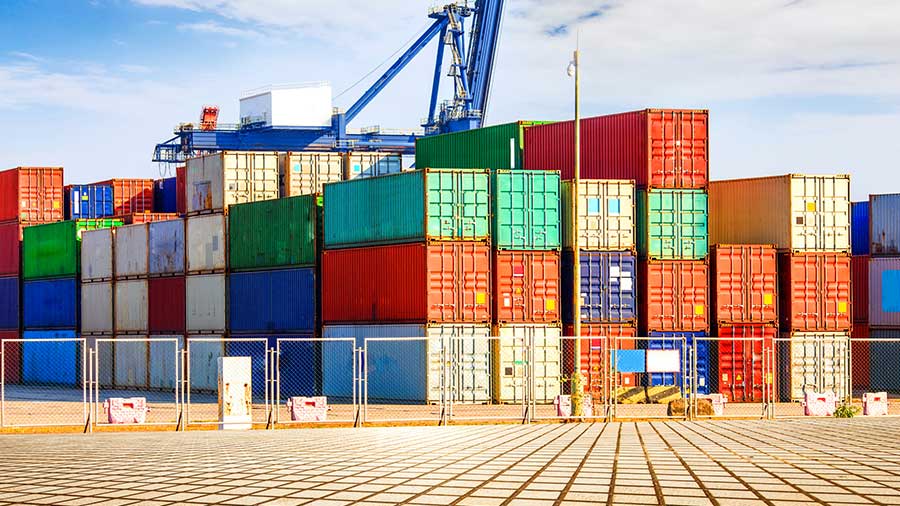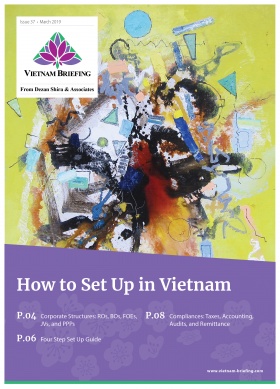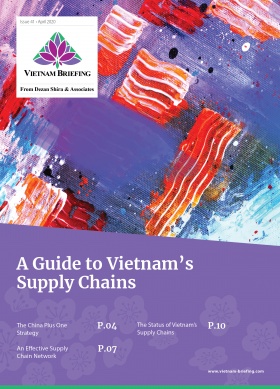Bac Giang: An Emerging Investment Destination
- Bac Giang is one of the major industrial hubs in northeastern Vietnam, supported by a favorable location and well-developed infrastructure.
- The province has achieved a robust growth rate and ranks high in the provincial competitiveness index.
- To attract investment, the government has been issuing tax and land incentives and has been working to address administrative inefficiency.
Surrounded by major economic hubs, ports, national highways, and an international border, Bac Giang province in northeastern Vietnam is situated at the crossroads of major trade routes. It is located adjacent to the key economic triangle Hanoi – Hai Phong – Quang Ninh, 110 km from the Huu Nghi Border Gate with China, 100 km from the Hai Phong seaport, and 40 km from Hanoi’s Noi Bai International Airport (HAN).
With its growing gross regional domestic product (GRDP), income per capita, trade, and favorable location, the province has started to emerge as an attractive investment destination.
Economic growth
In 2020, among Vietnam’s 63 provinces, Bac Giang was in the top two of GRDP growth rate reaching 13.02 percent at US$5.3 billion. The average GRDP per capita also increased by 14.2 percent, to US$2,900 the same year. Despite the impact of the COVID-19 pandemic, the province still grew 7.4 percent in the first quarter of 2020.
Sector growth
Bac Giang’s economic sectors recovered quickly from the pandemic and continue to grow substantially. Among the sectors, the industry sector grew by nearly 20 percent, and maintains its role as the main driver for the province’s economic growth and economic structural transformation.
The provincial government is also trying to create favorable conditions for investment in high-tech agriculture and rural areas, focusing on organic and clean agricultural production. They are also trying to promote branding, packaging, and product labeling in the sector for value addition.
Economic structure
The industry-construction sector accounted for the majority of the province’s economy at 57.7 percent, while the services sector accounted for 24.7 percent in 2020. Agriculture grew by 6.7 percent.
Agriculture still holds a competitive edge in Bac Giang. The province is home to the largest lychee areas and other tropical fruits.
Trade
In 2020, exports reached US$11.12 billion, exceeding 71 percent of the target set by provincial authorities.
Investments
In 2020, Bac Giang approved new licenses and permitted additional investment to 215 projects with total investment of nearly US$1.4 billion, up 7.3 percent year on year, rising to ninth position among provinces and cities nationwide in FDI attraction. Provincial authorities are looking to attract US$1.3 billion of investments in 2021 with prioritization in high-tech, green and economical technology with those using domestic materials and striving for technology transfer and labor training.
2019-2021 investments
In 2019, the province attracted 107 domestic and 76 foreign-invested projects, with registered capital amounting to US$1.3 billion and US$830.7 million respectively.
As of November 2020, Bac Giang attracted nearly US$1.25 billion of converted investment capital, a growth of 6.8 percent compared to the same period in 2019. Registered capital reached US$ 867.7 million with 87 foreign investment projects, ranking eighth in FDI attraction nationwide.
Most recently, Apple manufacturer Foxconn stated it would invest an additional US$700 million in Bac Giang to produce Apple’s MacBook and iPad devices from its manufacturing facility. In the first two months of 2021, Bac Giang attracted over US$588 million in investment, more than four times higher than in the same period last year.
Almost all FDI projects operate in industry sectors such as garments and textiles, electronic parts, and solar panels.
Regional competition
Bac Giang ranks as the 40th most competitive province in the country amongst 63 provinces as per the Provincial Competitive Index 2019. Meanwhile, according to the Provincial Administrative Performance Index 2019 (PAPI), which measures provincial governance performance, Bac Giang’s reached 81.84 points, up 3.7 points on-year, and the satisfaction index of people, enterprises and organizations on administrative agencies reached 89.18 percent, ranking ninth in Vietnam.
On the flip side, Bac Giang ranks poorly in audit as investors find the audit process lacking in transparency and fairness.
Working to address the issue, Bac Giang’s People Committee has promised to increase transparency and efficiency in audit and other administrative activities by learning from the successful experiences of other localities. The province aims to jump to the top 15 rankings in the PCI for 2020.
Provincial authorities have also set up a 24-hour hotline to receive feedback from investors. Large foreign businesses can also register to meet with authorities to resolve business challenges.
Infrastructure
Bac Giang ranked in the top five of the Infrastructure Index, also part of the PCI, and is one of the major industrial hubs in Vietnam. The region has seven industrial parks, namely, Dinh Tram, Quang Chau, Song Khe – Noi Hoang, Van Trung, Viet – Han (Vietnam – South Korea), Hoa Phu, and the newly-opened Van Trung 2 spread over 1,627 hectares.
In addition, the region is also home to 36 industrial clusters spread over 682 hectares. The government also recently approved the expansion of three industrial parks: Yen Lu, Yen Son – Back Lung, and Tan Hung industrial parks along with the construction of three additional industrial parks.
The region is well connected with its neighboring provinces through major highways such as 1A, 31, 37, 279, 17, 398, and the Hanoi-Bac Giang Expressway which handles the increased traffic between the capital Hanoi and Bac Ninh and Bac Giang provinces.
In terms of rail connectivity, Bac Giang is part of two major railway networks, Kep – Halong and Hanoi – Dong Dang, with the latter extending up to the Vietnam-China border. Apart from the road and rail network, the inland water navigation also presents opportunities. The waterway is continuing to improve, connecting infrastructure via a network of three major rivers, Thuong, Cau, and Luc Nam, which can accommodate vessels of 40 metric tons (MT) to 500 MT. In addition, the Hai Phong Port, the leading seaport for northern Vietnam is about 100 km from the province.
Preferential investment policies
As industrial land is increasingly occupied, Bac Giang has implemented four criteria to select investment projects, which are: effective land use, less labor-intensive projects, advanced and modern tech projects, high-value addition, and contribution to the state budget.
Going forward, the provincial government has also decided to focus on high-tech projects, such as electronics, machinery, and consumer goods, which are capable of joining global value chains and have high export potential.
With more industrial parks under development, the government is devising investor-friendly policies, in the hope of attracting high-tech investments. In addition, the government has also started to invest in the declining agriculture sector to develop high-tech agricultural farms and set priorities for investment in clean and renewable energy to meet rising electricity demand.
Provincial incentives
The provincial government has numerous preferential policies based on locations and industry type. Depending on the sector and investment destination, investors are eligible to receive land rent exemption for up to 15 years.
The government also provides tax incentives for certain imports and exports, As per the PCI, among businesses operating in the province, 42.59 percent said they would likely expand their firm operations due to the favorable business environment in Bac Giang.
Bac Giang – an opportunity for investors
Bac Giang has already improved much of the business conditions related to foreign investments and is in the process of reforming them further to ease investor concerns. For example, the province is working to further improve infrastructure, increase audit transparency, and promote business-administration and local government dialogues.
Due to its favorable location, connectivity, and investor-friendly policies, Bac Giang province bodes well and presents opportunities for first-time investors.
Note: This article was first published in February 2018, and has been updated to include the latest developments.
About Us
Vietnam Briefing is produced by Dezan Shira & Associates. The firm assists foreign investors throughout Asia from offices across the world, including in Hanoi, Ho Chi Minh City, and Da Nang. Readers may write to vietnam@dezshira.com for more support on doing business in Vietnam.
We also maintain offices or have alliance partners assisting foreign investors in Indonesia, India, Singapore, The Philippines, Malaysia, Thailand, Italy, Germany, and the United States, in addition to practices in Bangladesh and Russia.
- Previous Article How the ACIA Benefits Foreign Investors and Trade in Vietnam
- Next Article Unternehmensstrukturen in Vietnam: ROs, BOs, FOEs, JVs und PPPs






























